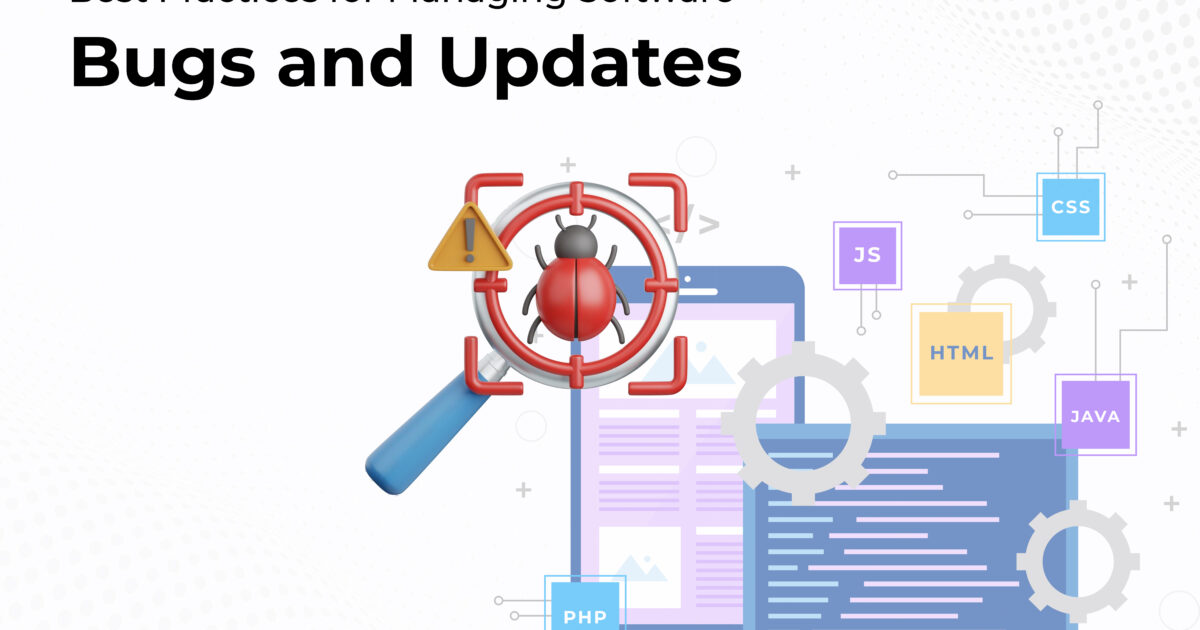Successful management of software bugs and updates is key to achieving the quality and reliability of applications. Following a proper process of bug tracking, testing, and handling updates ensures that software acts as expected, minimizes user disruption, and maintains your audience’s trust. Some of the most important best practices for handling bugs and updates in any development cycle are given below.
- Install a Solid Bug Tracking System
A robust bug tracking system is required to keep bugs sorted and managed efficiently. Jira, Trello, and Bugzilla are some of the most widely used tools utilised to plan tasks, track progress, and rank bugs. Such systems allow teams to prioritise bugs based on their severity, thus addressing the most critical ones first.
Example:
In Spotify, the programmers use Jira to monitor bugs in real time, prioritising them by power and assigning them to the appropriate programmer. This way, if a bug in the music streaming functionality (like audio skipping) is discovered, it is fixed before less important bugs, like visual UI bugs.
A bug tracking system provides valuable insights regarding how quickly bugs are being fixed so that teams can study trends and ease their processes. With notifications, the system ensures the team is always aware of the latest updates, allowing issues to be fixed on time.
- Implement a Systematic Bug Reporting Process
An orderly and brief process for reporting bugs is necessary to ensure rapid and efficient bug fixing. A bug report must be detailed enough to assist the developer in recognising the problem and determining the context of the problem.
Example:
For GitHub, users are also encouraged to provide a full report when reporting bugs. This includes dependable steps towards the issue, expected behaviour, and actual behaviour. For example, if something goes wrong when pushing code into a storehouse, a user can provide the very Git command executed and a copy of the error message. With this full report, developers can then correct the problem more quickly.
- Adopt an Agile Bug Fixing Strategy
Under agile development, bugs are tackled within repetitive cycles known as sprints. This allows teams to focus on bug fixing and still implement new features. Agile development is all about flexibility and collaboration, so bug fixes can be prioritised when needed.
Example:
The Atlassian team uses Agile sprints to fix bugs so that they can quickly alter things if there are critical bugs found during development. In their daily stand-up meetings, the team discusses what bugs need to be fixed as a priority and adjusts priorities accordingly.
Sorting Process:
- High priority: A bug in user login or a critical feature.
- Medium priority: Low-impact bugs such as UI inconsistencies.
- Low priority: Cosmetic or low-impact bugs that do not interfere with functionality.
- Test Early, Test Regularly
Testing is a most critical step in order to prevent bugs from reaching production. Through early testing while the application is still in the development stage, developers can discover and resolve problems before they become big issues.
Example:
Facebook does continuous integration (CI) testing on every code modification via Jenkins and Selenium to catch problems early. This guarantees that all features being added or modified are tested thoroughly before reaching production.
Types of Testing:
Unit Testing: Testing isolated components of a software application, i.e., whether a payment gateway component is working properly.
Integration Testing: Ensuring that different components interact properly, like the integration between a database and a front-end application.
Regression Testing: Ensuring that new code does not undermine existing functionality, for example, ensuring that introducing a new feature does not interfere with the app’s login process.
- Be Transparent with Users
Transparency is essential when it comes to bug and update management. Users prefer being updated about what is happening with their software, especially when bugs or maintenance downtime affect them.
Example:
When Instagram launched a feature that was crashing for some users, the team disclosed clearly about the issue on their status page. They informed users of the bug and the attempts to resolve it and gave them a timeline for the resolution. Release notes and status were published on social media too, to make the users aware.
Provide information on new features, bug fixes, and any known issues a user should know about.
Provide information on expected maintenance windows and any potential disruption.
- Regularly Monitor and Improve Software
After the release, continuous monitoring of the software stops bugs from resurfacing and guarantees new updates work as expected. Real-time monitoring software like Sentry, New Relic, and Crashlytics allows teams to spot issues in time and respond in time.
Example:
Uber uses New Relic to monitor the performance of their app. If any bugs or performance slowness, such as ride requests taking a long time, are discovered, the team is immediately notified to debug and resolve the issue with minimal disruption to users.
By examining bug report trends and monitoring performance, teams can continue to improve software stability and user experience.
By following these best practices with a good bug tracking system, with a methodology-based reporting and testing process, carefully maintained updates, and open communication with users, you can ensure your software remains stable, reliable, and easy to use.
Not only do these practices reduce the incidence of bugs, but they also enable your team to solve them quickly and efficiently, maintaining the quality of the user experience high and annoying the users as little as possible. Each of these examples of successful companies demonstrates the worth of having a systematic, proactive approach to solving software bugs and updates.





